Introduction
This project’s aims were to evaluate the performance differences between HTTP/3 and other iterations of the HTTP protocol with regard to video streaming.
From results collected, it can be concluded that HTTP/3 is a viable alternative to HTTP/2 and HTTP/1.1 for video streaming. HTTP/3’s performance was similar to that of the other protocols under identical network conditions. Results also dictate that in most scenarios, HTTP/3 provides equal or better video streaming performance than other protocols, except where latency significantly impacts the network conditions of the client-server communication.
Video streams over HTTP/3 tend to have lower initial load times than HTTP/2 and HTTP/1.1. According to Akamai, this is an important metric to assess QoE, especially concerning video abandonment rates [3]. This indicates that HTTP/3 is an adequate protocol for video streaming compared to the previous HTTP versions.
What is HTTP/3?
Its the newest iteration of the HTTP application layer protocol, used to transfer data over the internet. It uses a new transport layer protocol, QUIC, which is a UDP-based protocol that aims to improve the speed of the web. Alternatively previous versions of HTTP use TCP as their transport protocol. As such, it can be very useful for websites on low-memory servers or with high traffic.
Findings
Packet Loss
Packet loss is a common issue on the internet, especially on mobile networks (see 1). The QUIC transport protocol handles packet loss much more efficiently than TCP, which previous versions of the HTTP spec sit atop. This can be explained by QUIC’s loss-detection mechanisms, mainly to do with packet numbers for retransmitted packets not being ambiguous, which allows for more efficient recovery of lost packets compared to TCP. This is not possible with TCP, which is a connection-oriented protocol, and as such, the loss of a single packet can cause the entire connection to be dropped.
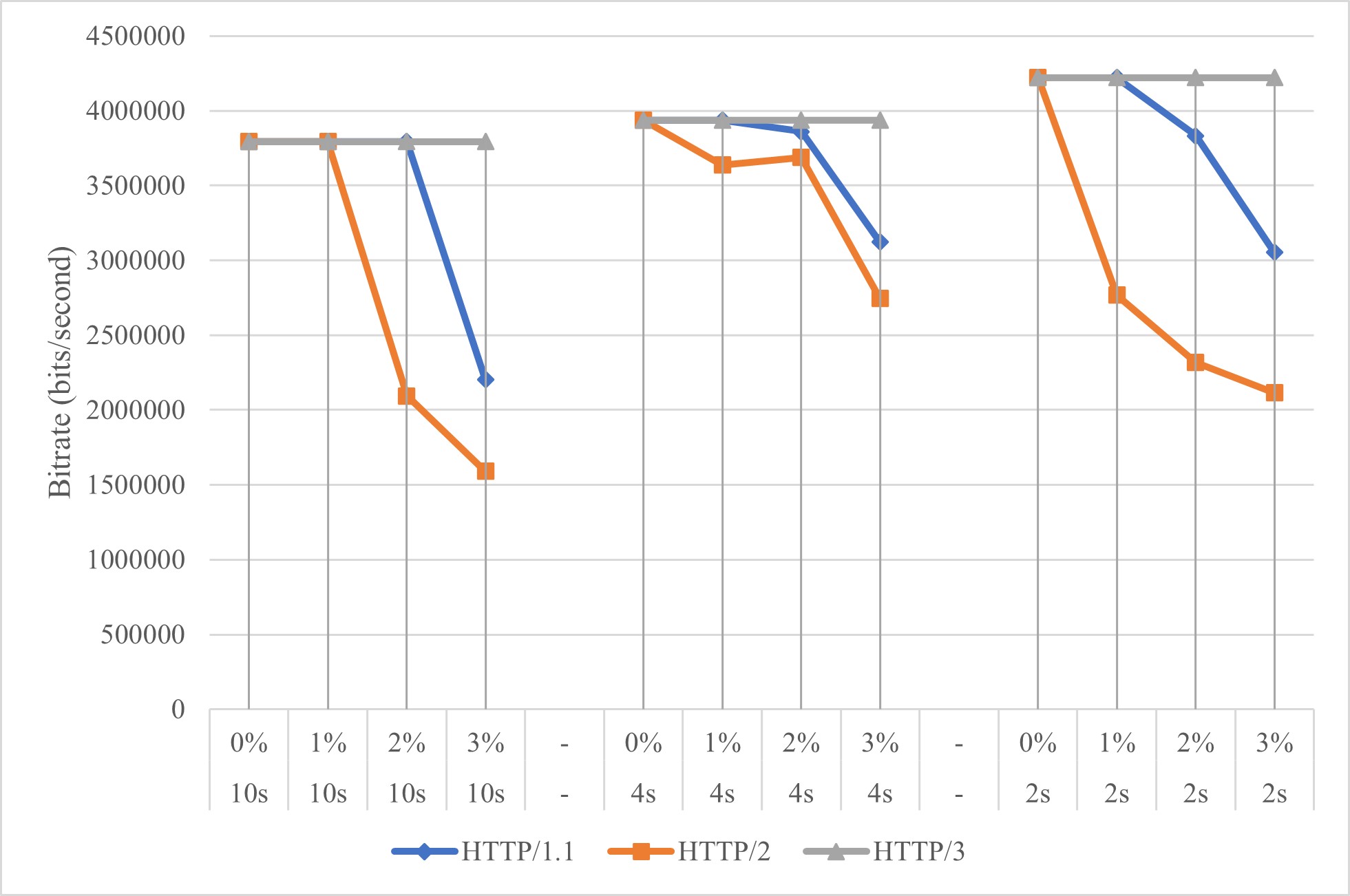 Relationship between mean video bitrate and packet loss rate
Relationship between mean video bitrate and packet loss rate
 Relationship between median video buffer length and packet loss rate
Relationship between median video buffer length and packet loss rate
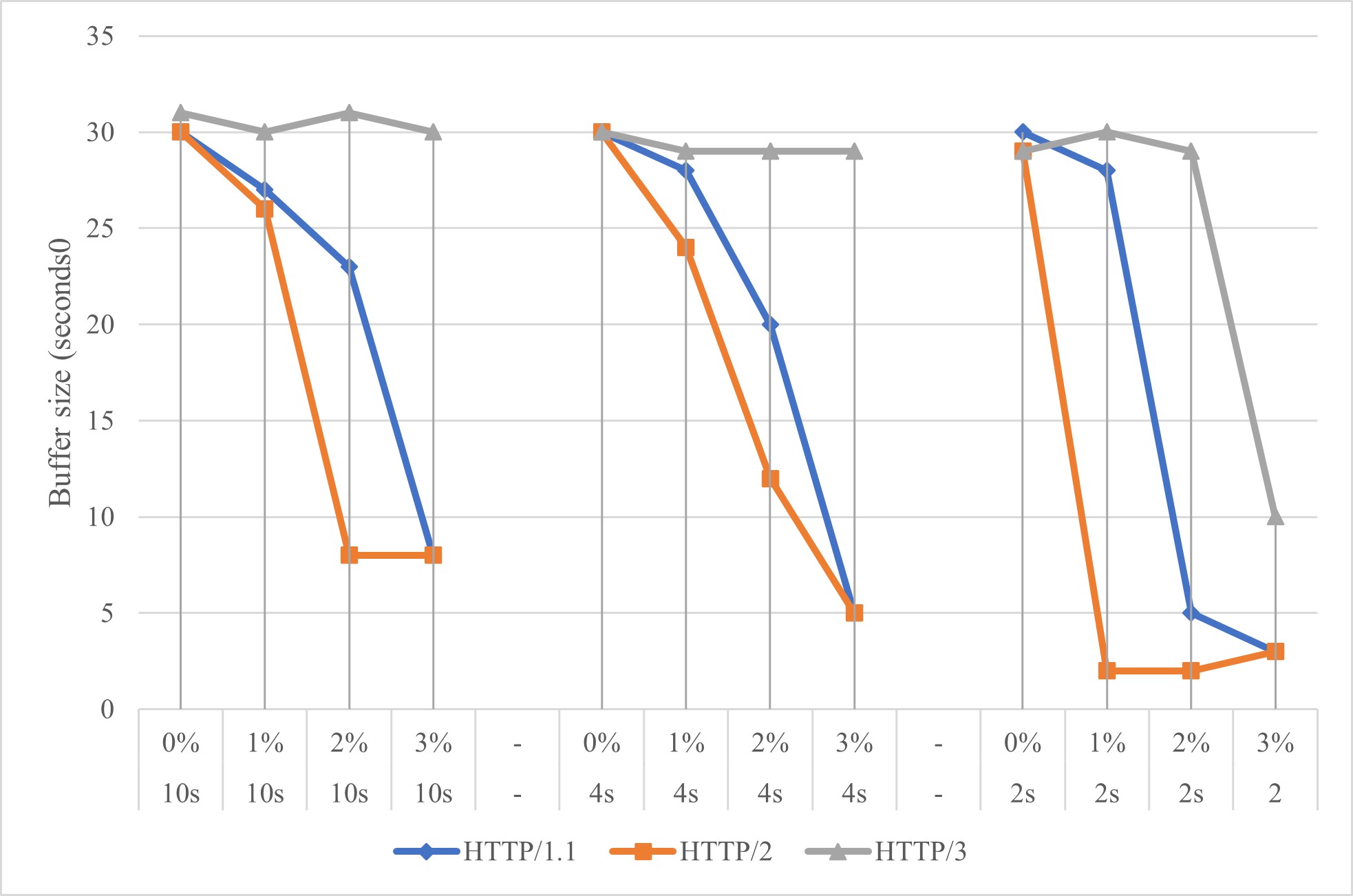 Relationship between the lower quartile of video buffer length
and packet loss rate
Relationship between the lower quartile of video buffer length
and packet loss rate
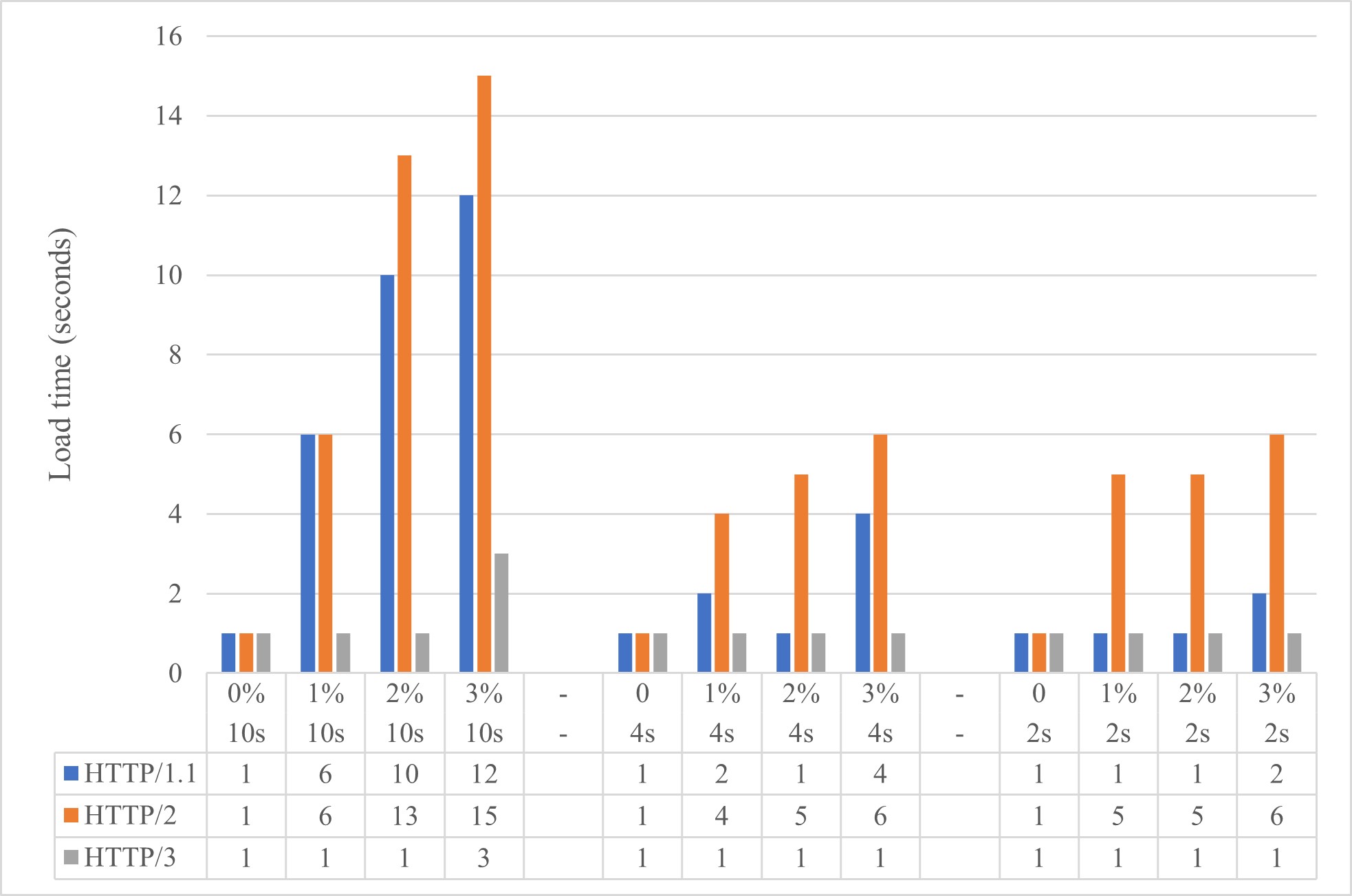 Relationship between the rounded-up initial load time of video
and packet loss rate
Relationship between the rounded-up initial load time of video
and packet loss rate
Latency
Latency refers to the time it takes for data to be sent from one endpoint to another. This is a very important metric for video streaming, as it affects the time it takes for a video segment to be downloaded and played. HTTP/3 has a significantly higher download time when latency is increased, when compared to HTTP/1.1 and HTTP/2.
This can likely be explained by the congestion-control algorithm being used by NGINX at the time of testing, based off TCP’s NewReno mechanism.
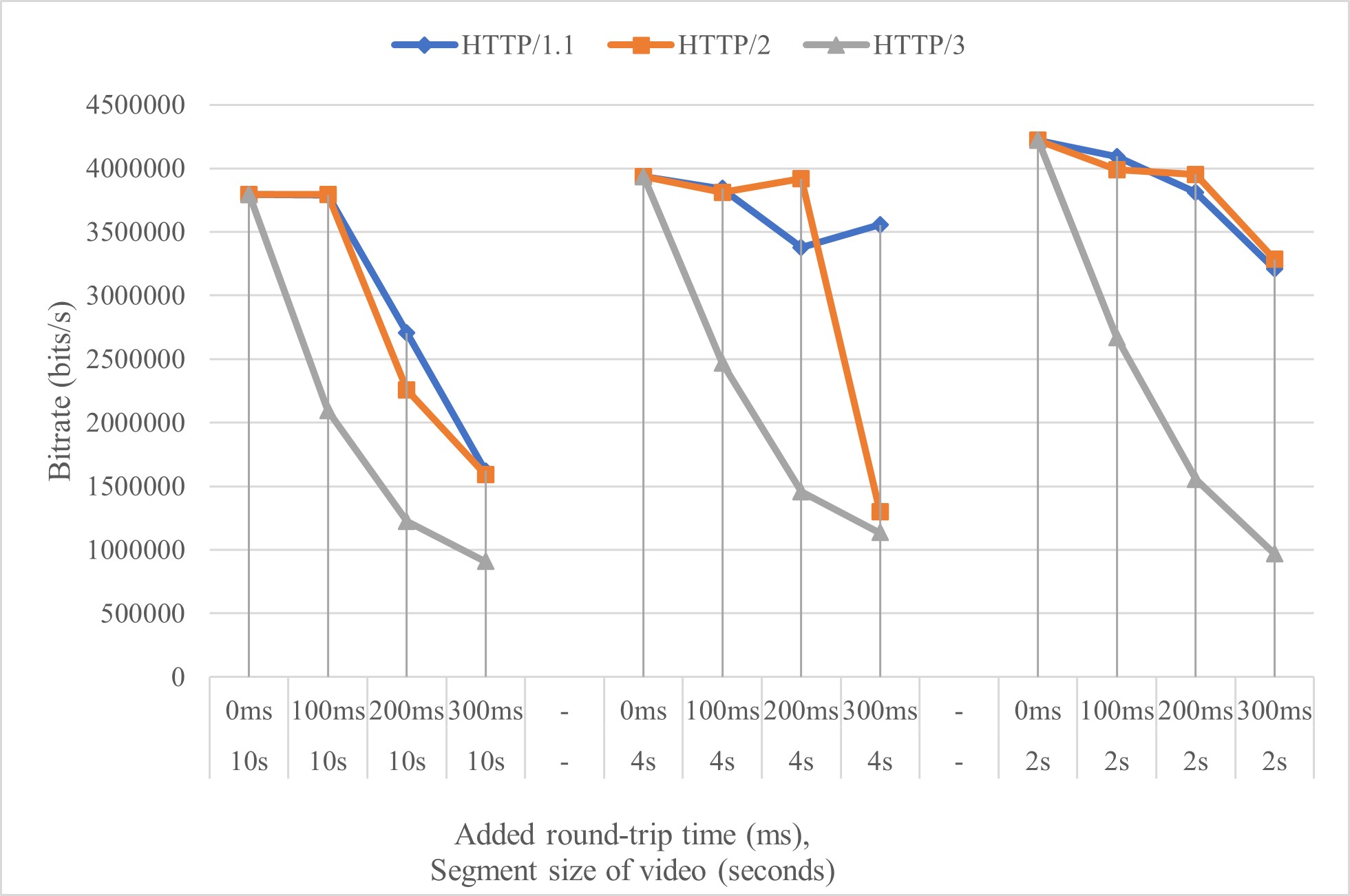 Relationship between mean video bitrate and round-trip latency
Relationship between mean video bitrate and round-trip latency
 Relationship between median video buffer length and round-trip latency
Relationship between median video buffer length and round-trip latency
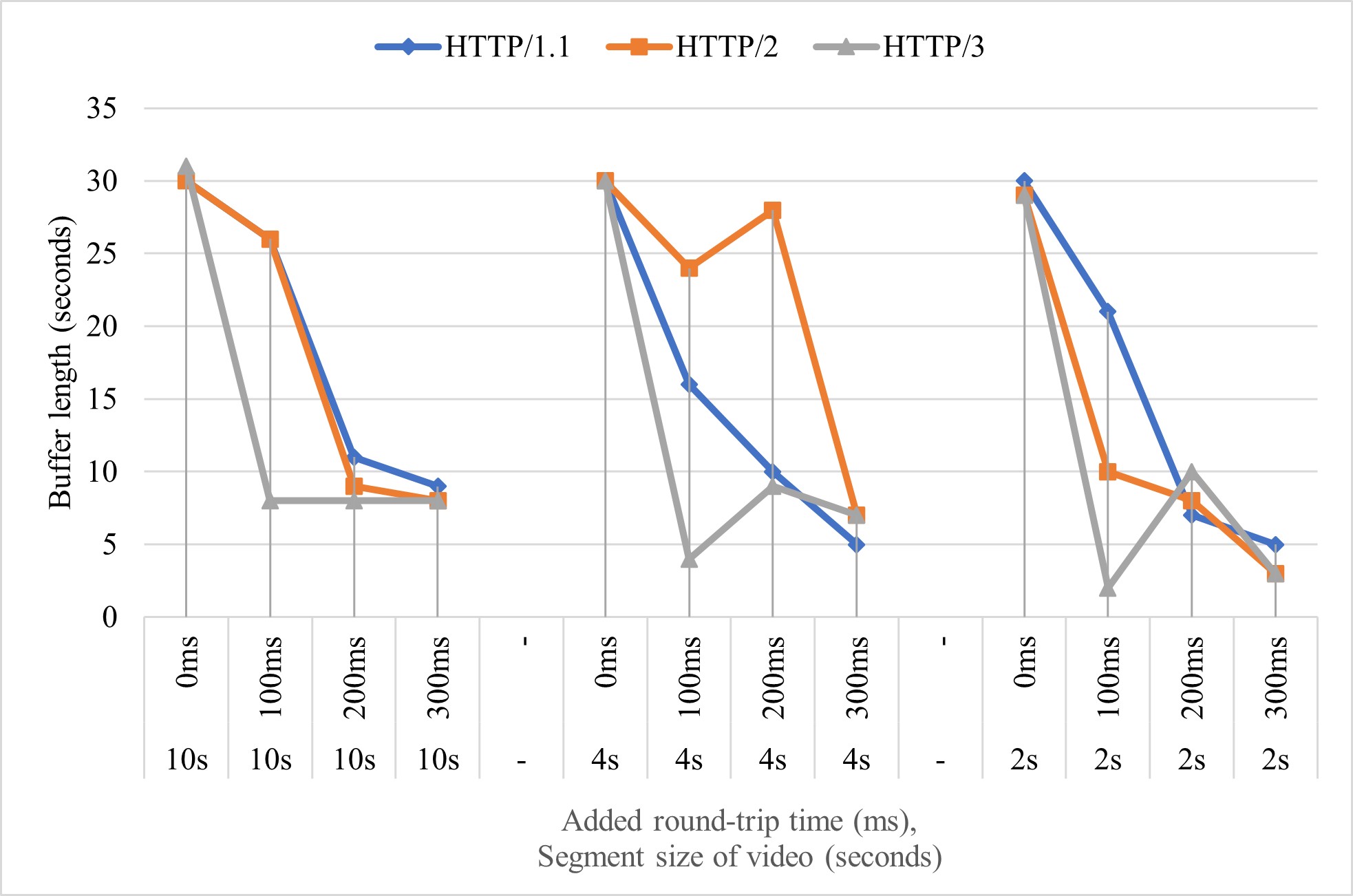 Relationship between the lower quartile of video buffer length
and round-trip latency
Relationship between the lower quartile of video buffer length
and round-trip latency
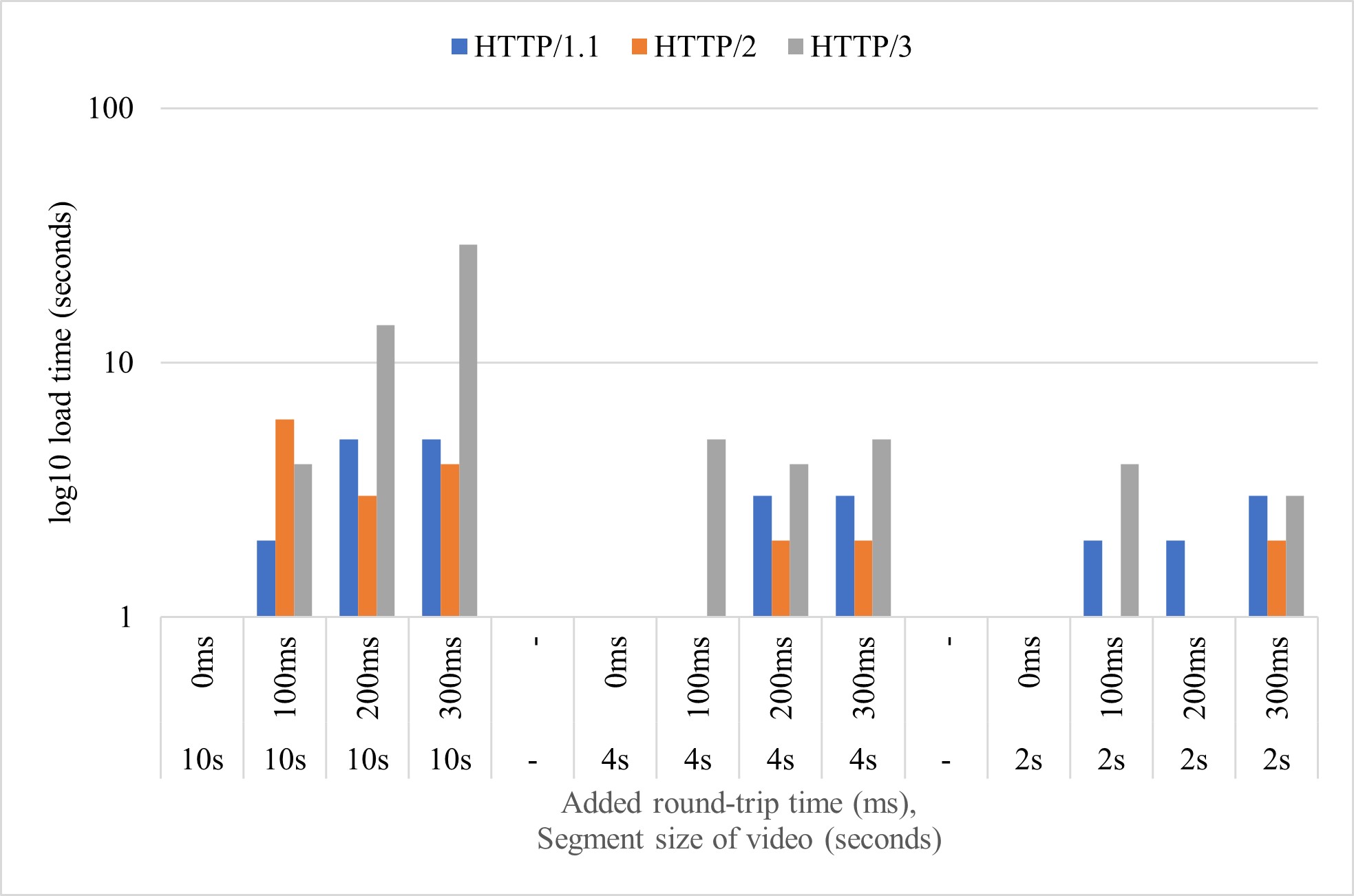 Relationship between the rounded-up initial load time of video
and round-trip latency
Relationship between the rounded-up initial load time of video
and round-trip latency
Bandwidth
HTTP/3’s overall bandwidth is lower than HTTP/1.1 and HTTP/2. This is likely due to the fact that the majority of QUIC’s code is implemented in userspace, and as such, will be somewhat slower than TCP or UDP, when implemented at the hardware level. This difference is mostly negligible at the rates tested, but under constrained conditions, this issue becomes less relevant.
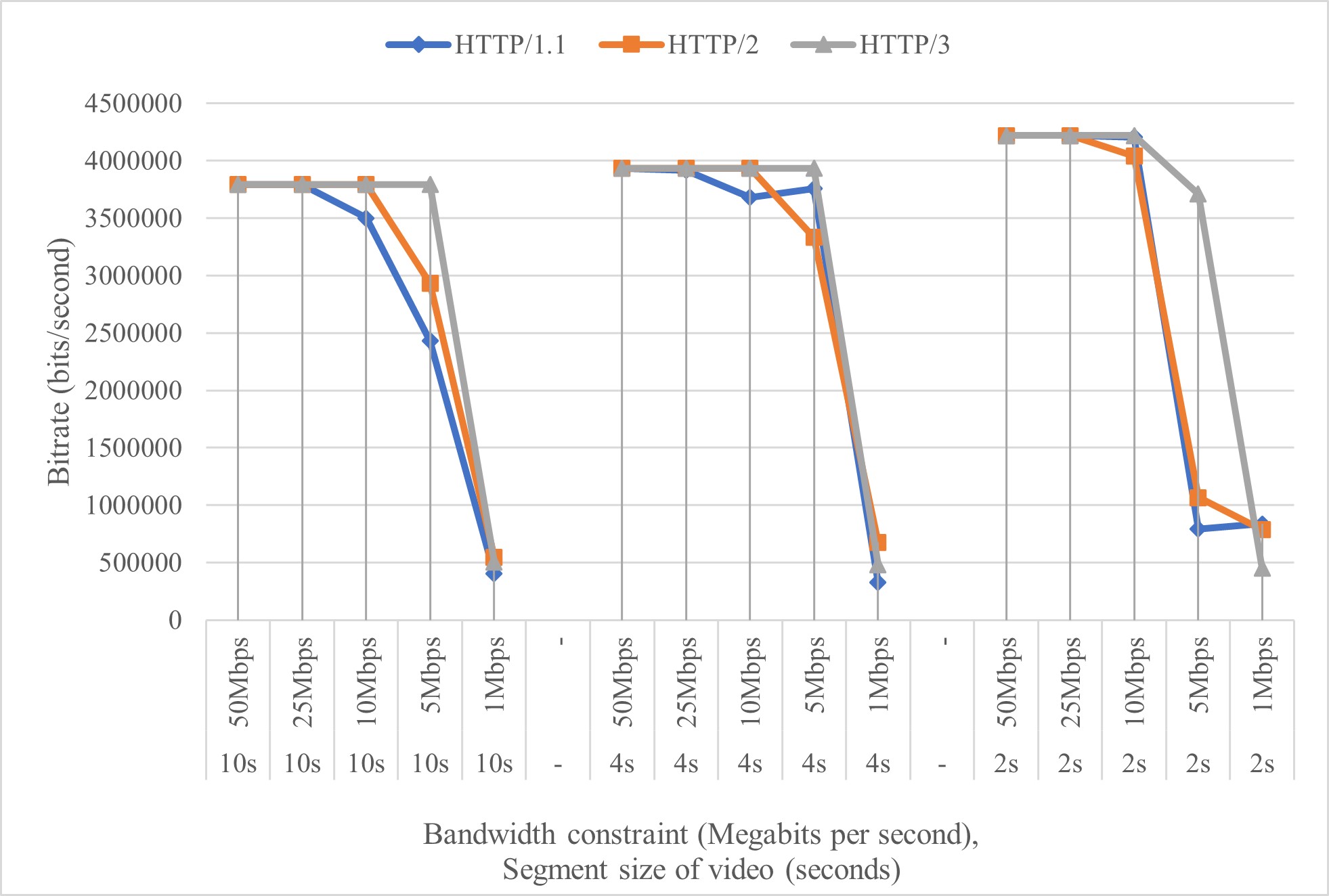 Relationship between mean video bitrate and bandwidth
Relationship between mean video bitrate and bandwidth
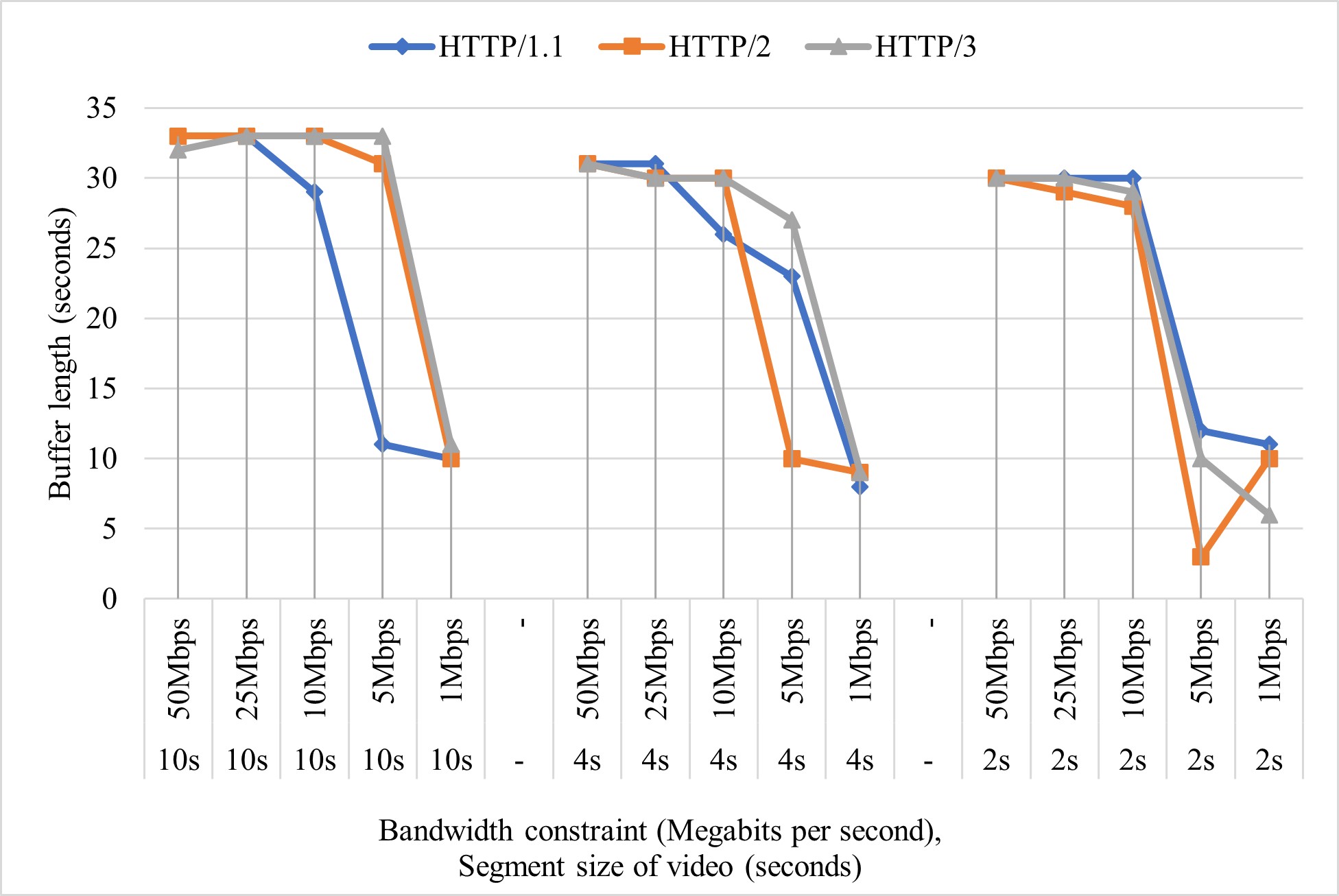 Relationship between median video buffer length and bandwidth
Relationship between median video buffer length and bandwidth
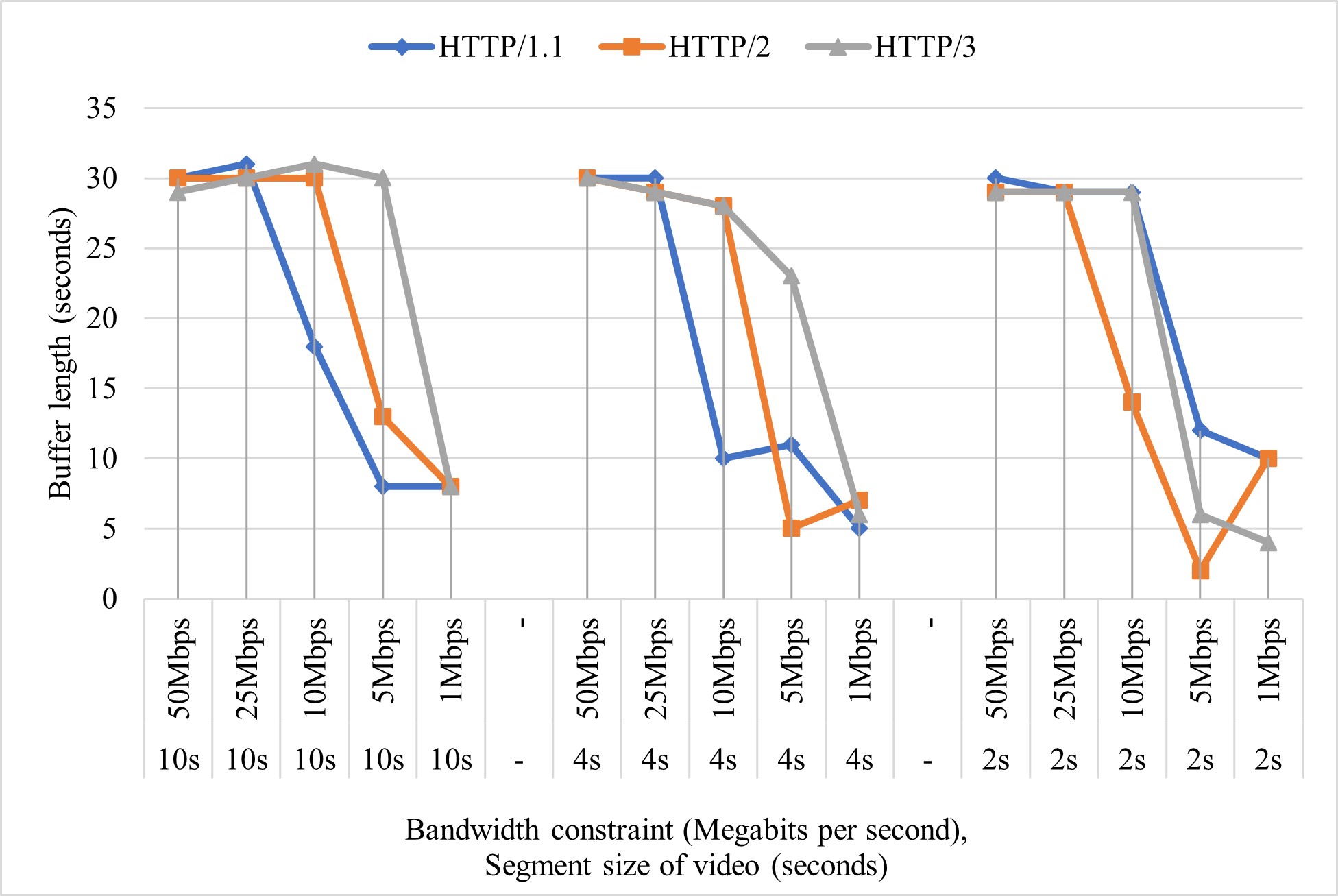 Relationship between the lower quartile of video buffer length
and bandwidth
Relationship between the lower quartile of video buffer length
and bandwidth
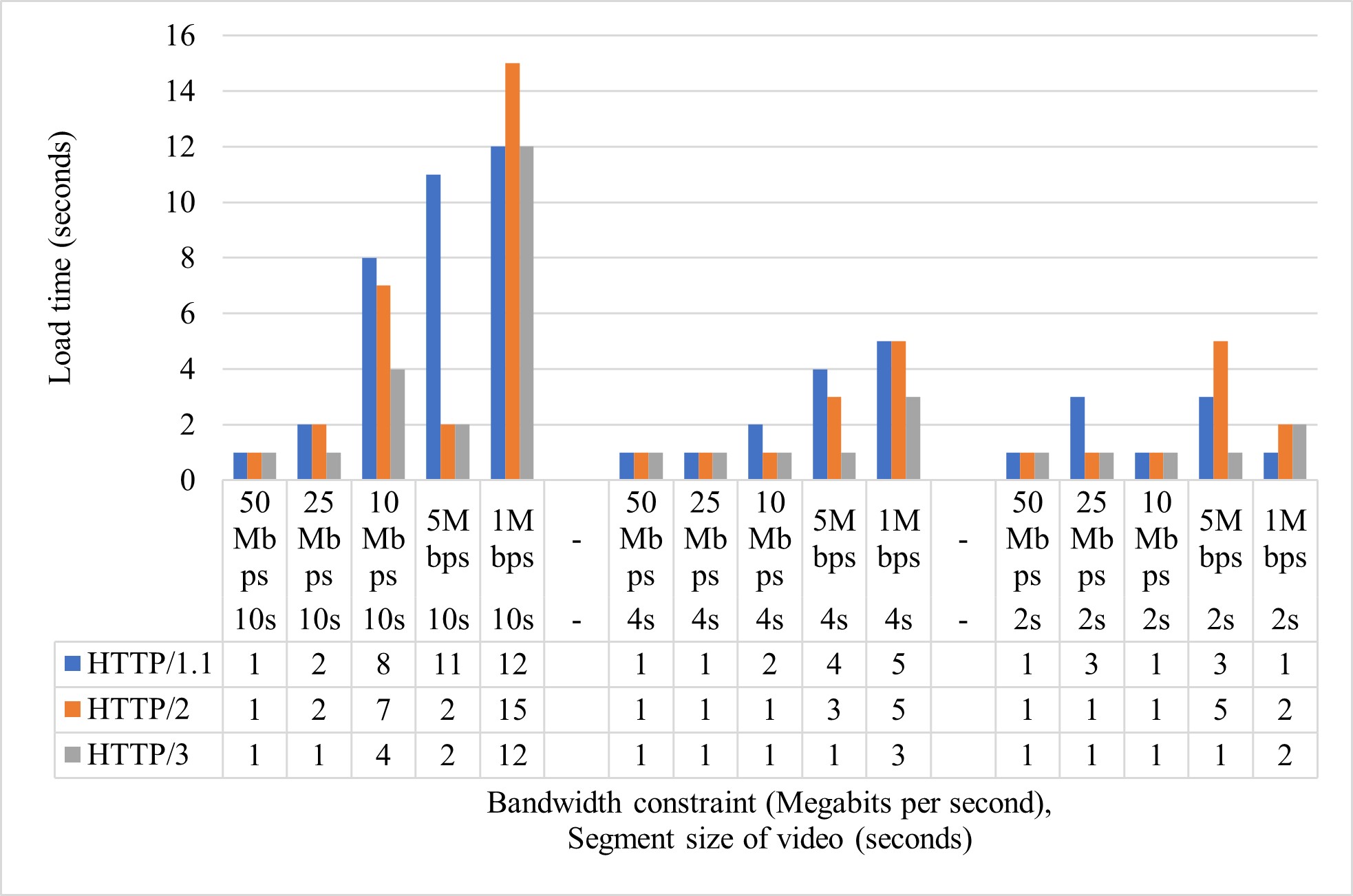 Relationship between the rounded-up initial load time of video
and bandwidth
Relationship between the rounded-up initial load time of video
and bandwidth
Conclusion
HTTP/3 is a very promising iteration of HTTP, and will likely increase in popularity as server-side implementations mature and become more accessible. As far as I can tell, it is unlikely to completely replace HTTP/1.1 or HTTP/2 however, as it is not backwards compatible with these versions. Instead, I believe a legacy HTTP/1.1 or HTTP/2 server act as a sidecar to the HTTP/3 server, supporting older clients, acting as a fallback, and informing clients of the availability of the HTTP/3 server.
To learn more about my project, see the report.